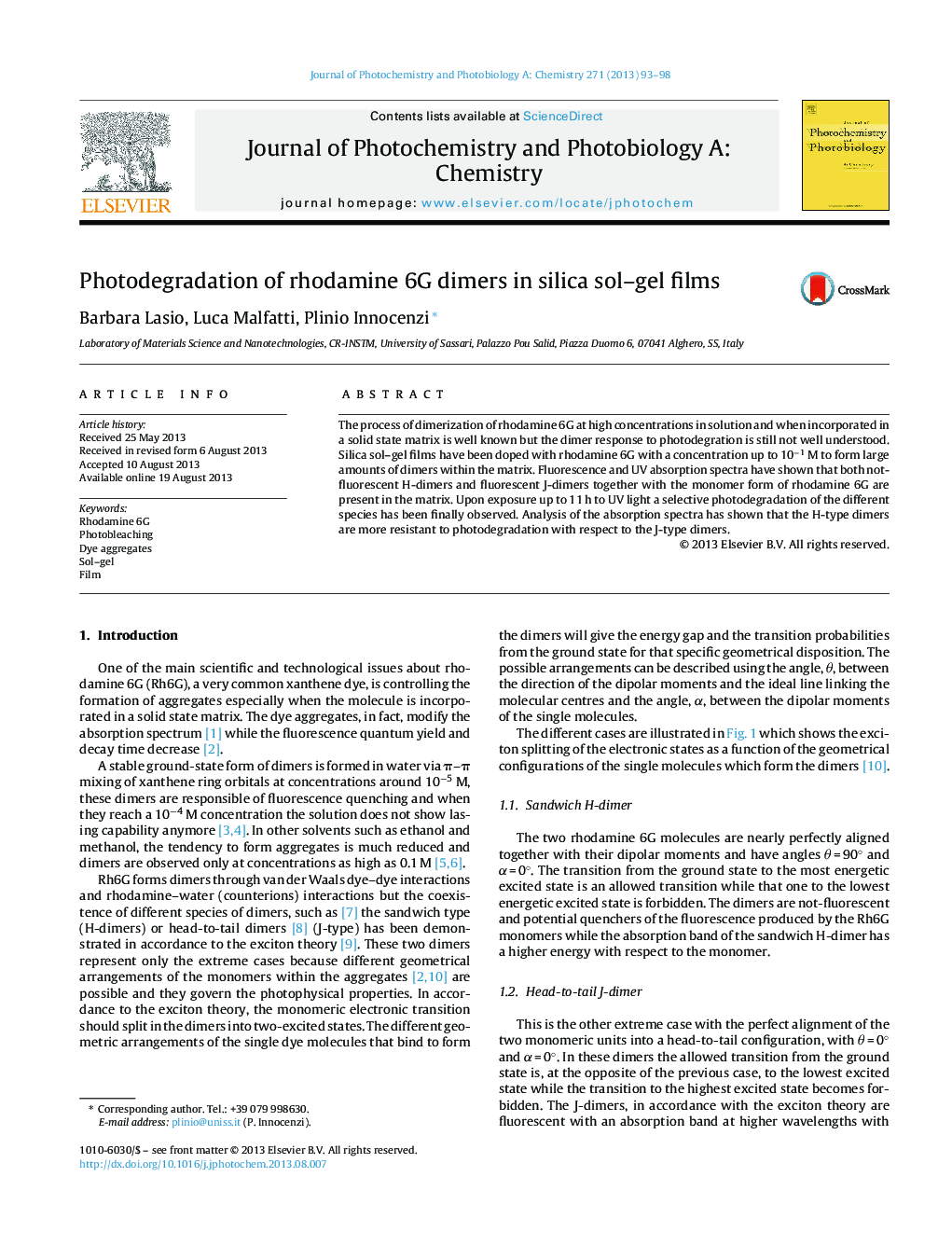| Article ID | Journal | Published Year | Pages | File Type |
|---|---|---|---|---|
| 27286 | Journal of Photochemistry and Photobiology A: Chemistry | 2013 | 6 Pages |
•Rhodamine 6G in silica sol–gel films forms dimers at high concentrations.•Different species of dimers, H-type and J-type, are observed.•The photodegradation of the different dimers has been studied.•The sandwich H-dimers degrade after head-to-tail fluorescent J-dimers.
The process of dimerization of rhodamine 6G at high concentrations in solution and when incorporated in a solid state matrix is well known but the dimer response to photodegration is still not well understood. Silica sol–gel films have been doped with rhodamine 6G with a concentration up to 10−1 M to form large amounts of dimers within the matrix. Fluorescence and UV absorption spectra have shown that both not-fluorescent H-dimers and fluorescent J-dimers together with the monomer form of rhodamine 6G are present in the matrix. Upon exposure up to 11 h to UV light a selective photodegradation of the different species has been finally observed. Analysis of the absorption spectra has shown that the H-type dimers are more resistant to photodegradation with respect to the J-type dimers.
